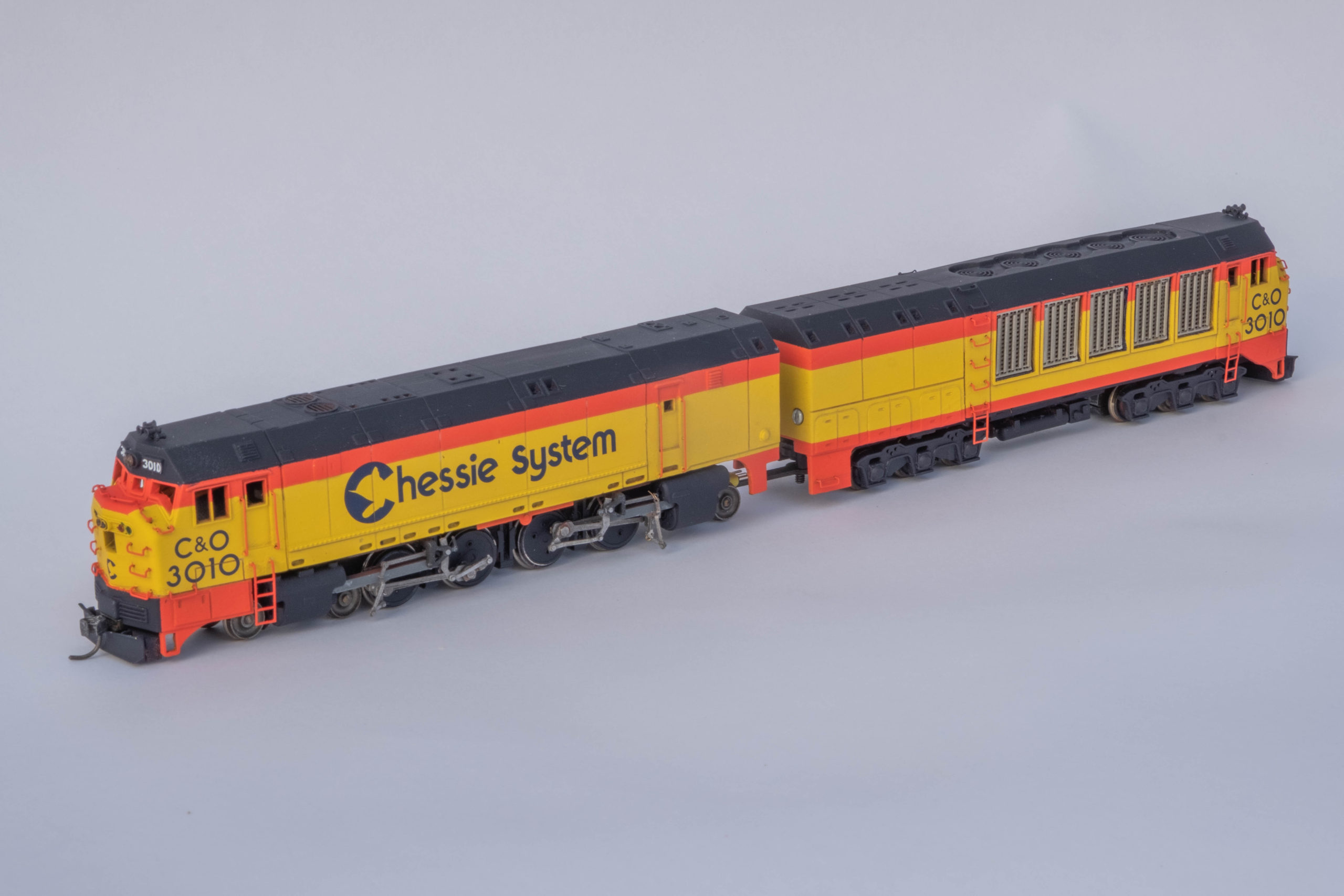
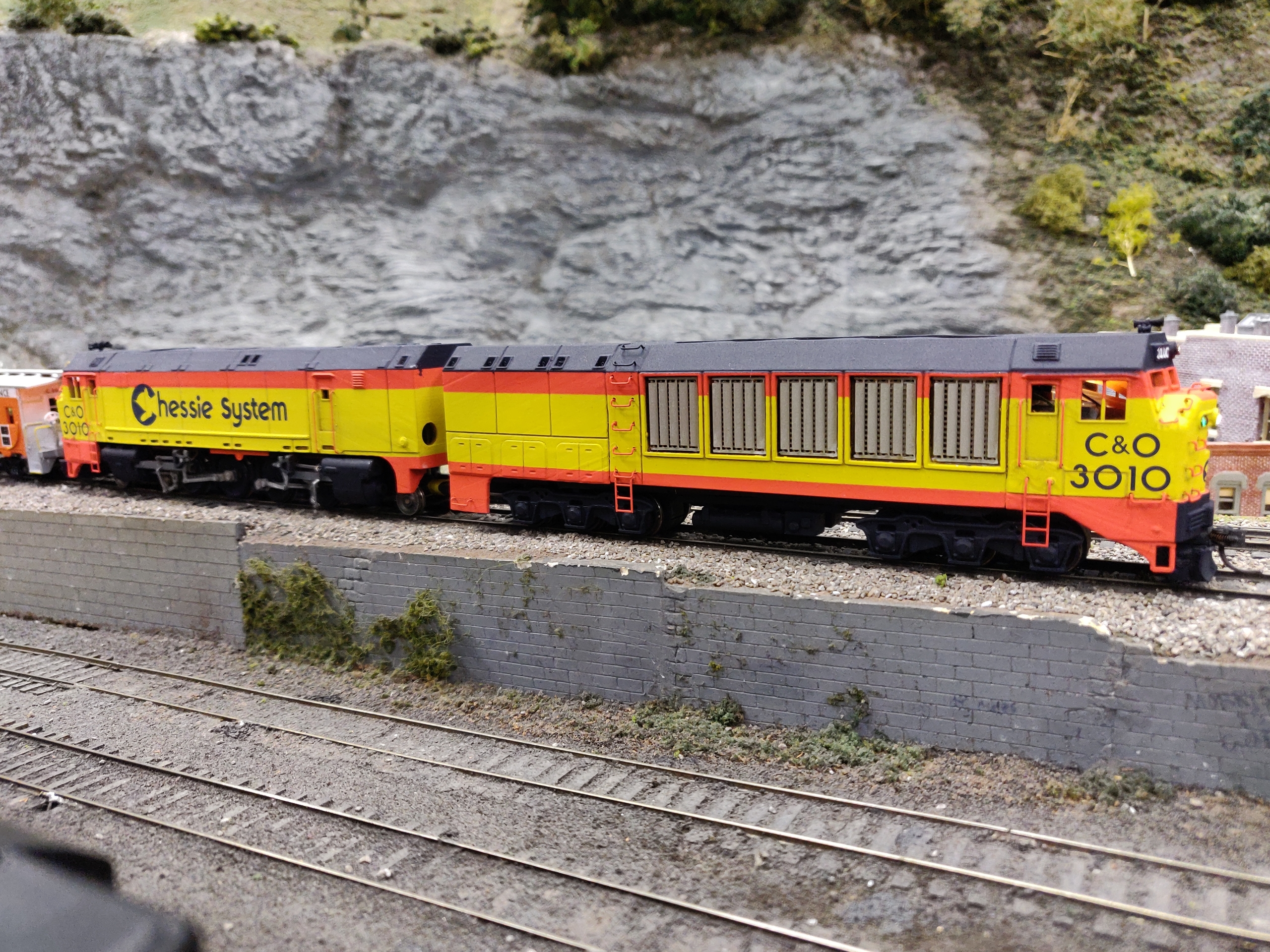
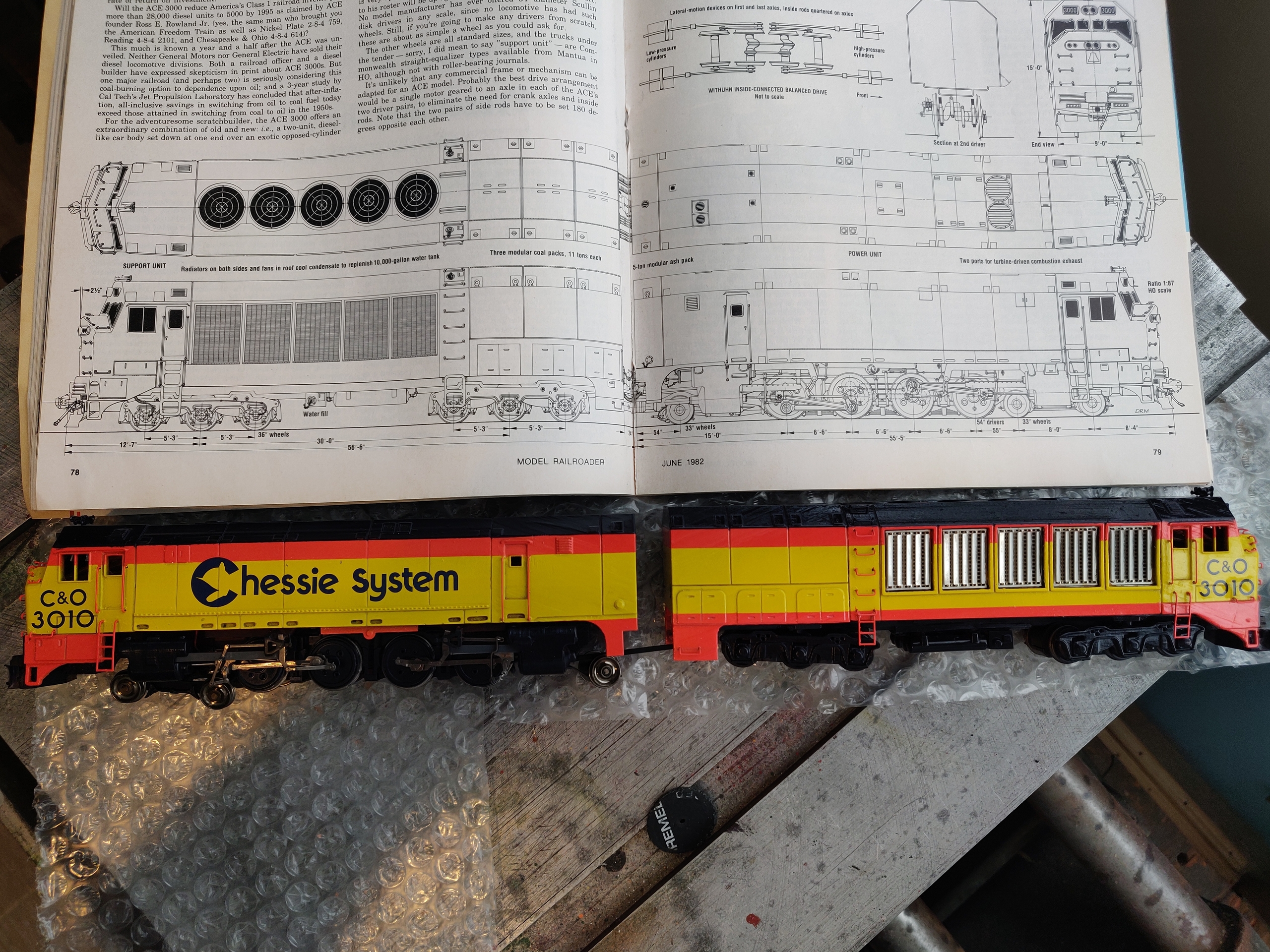
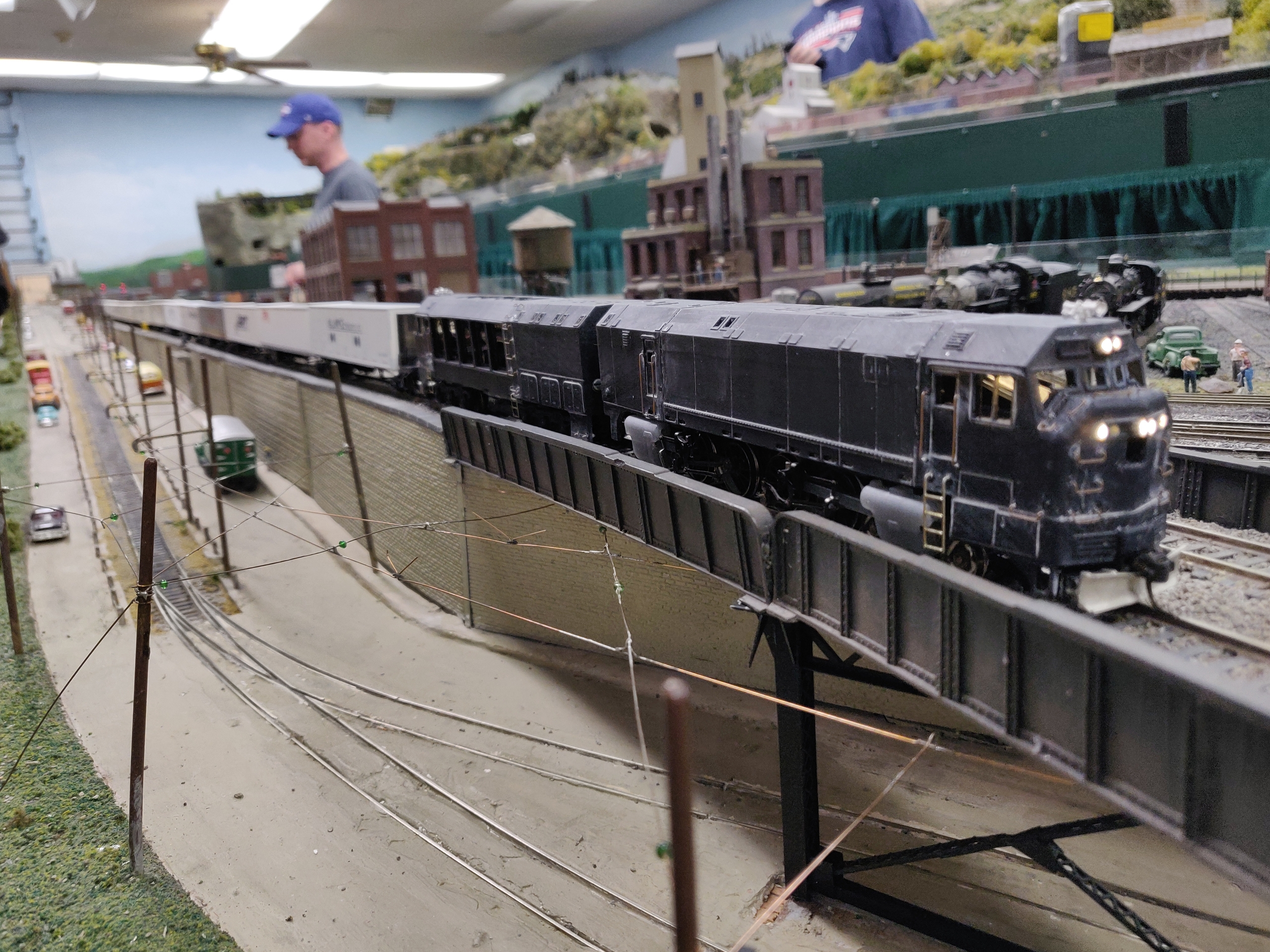
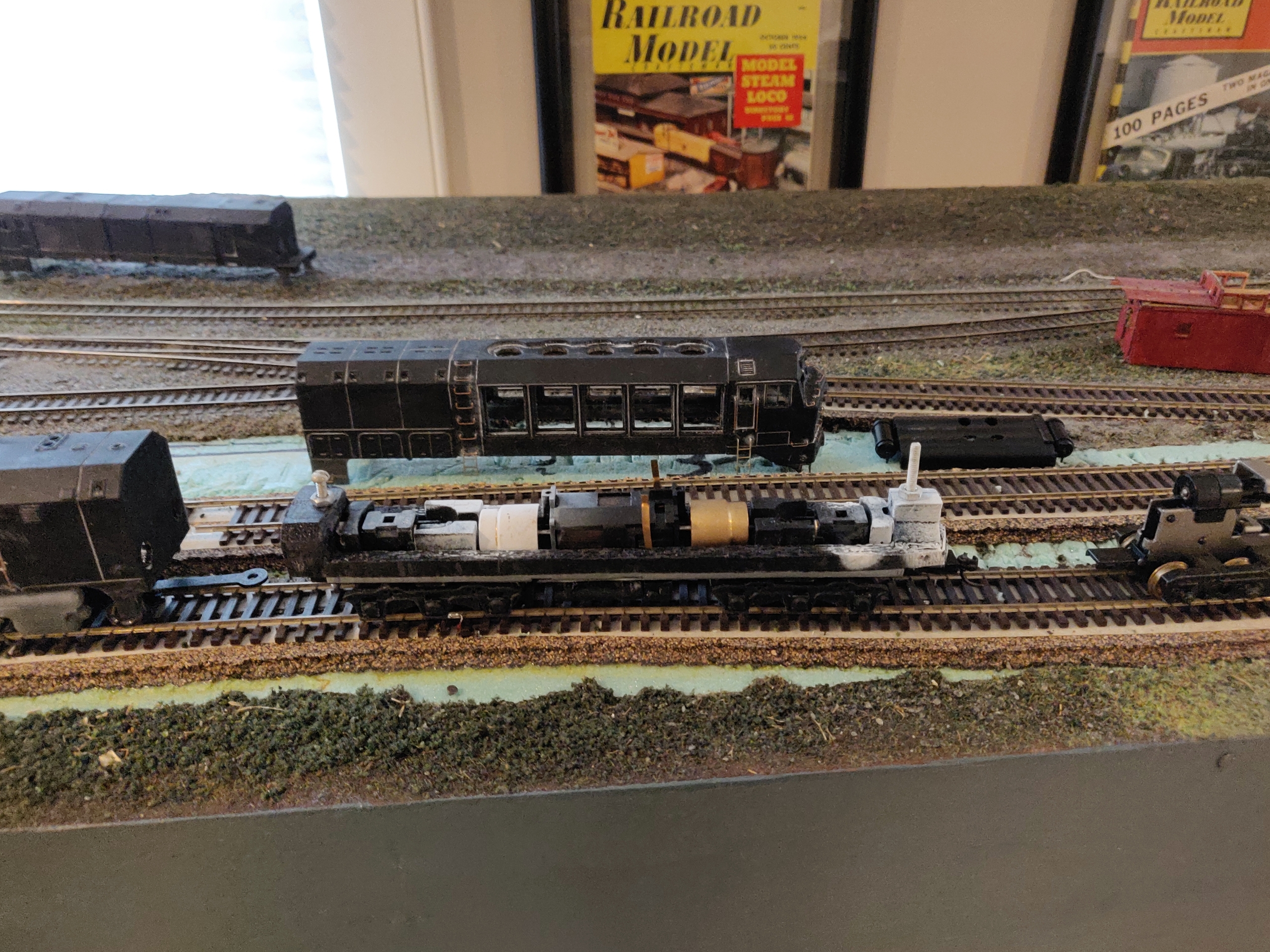
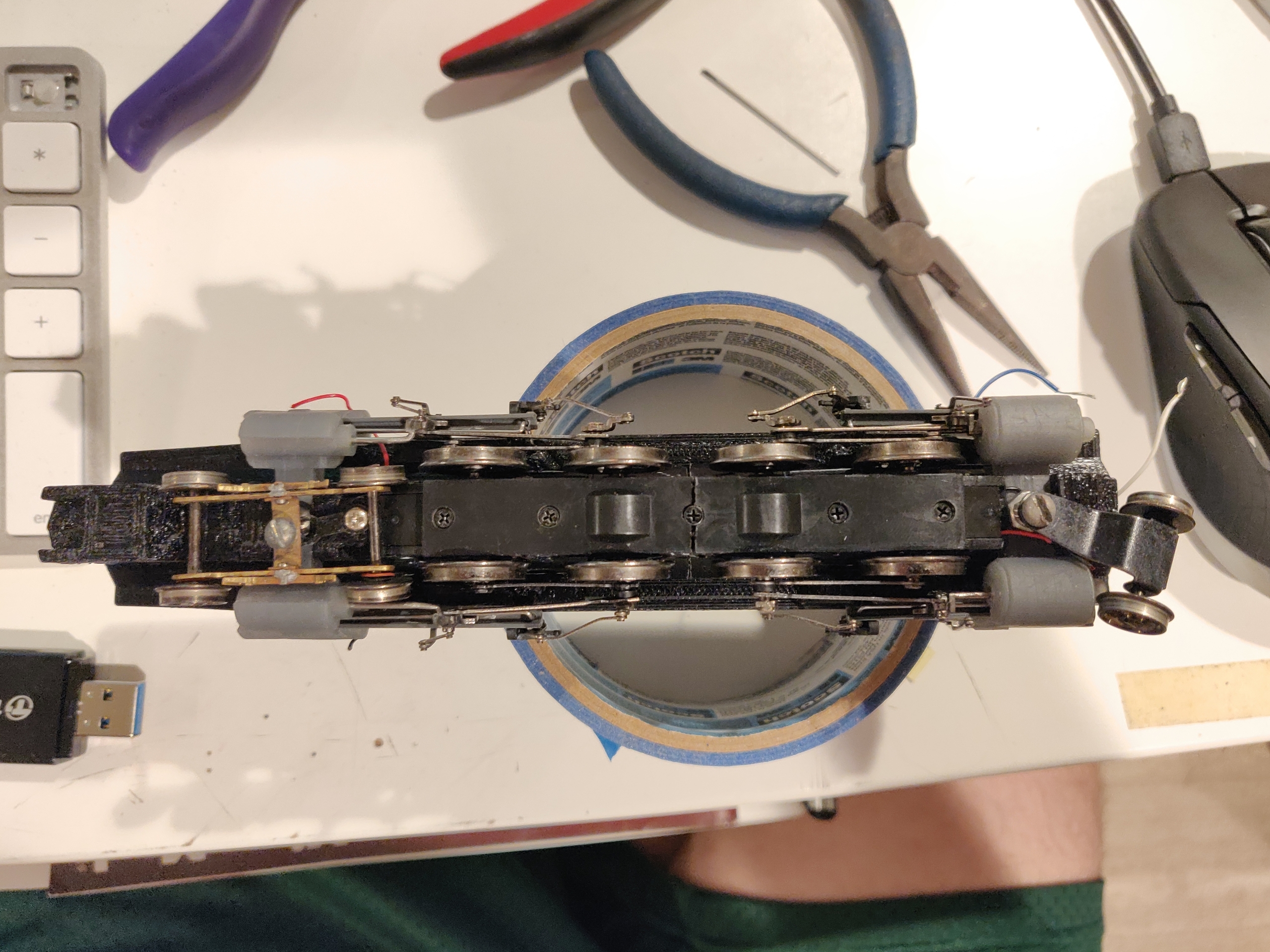
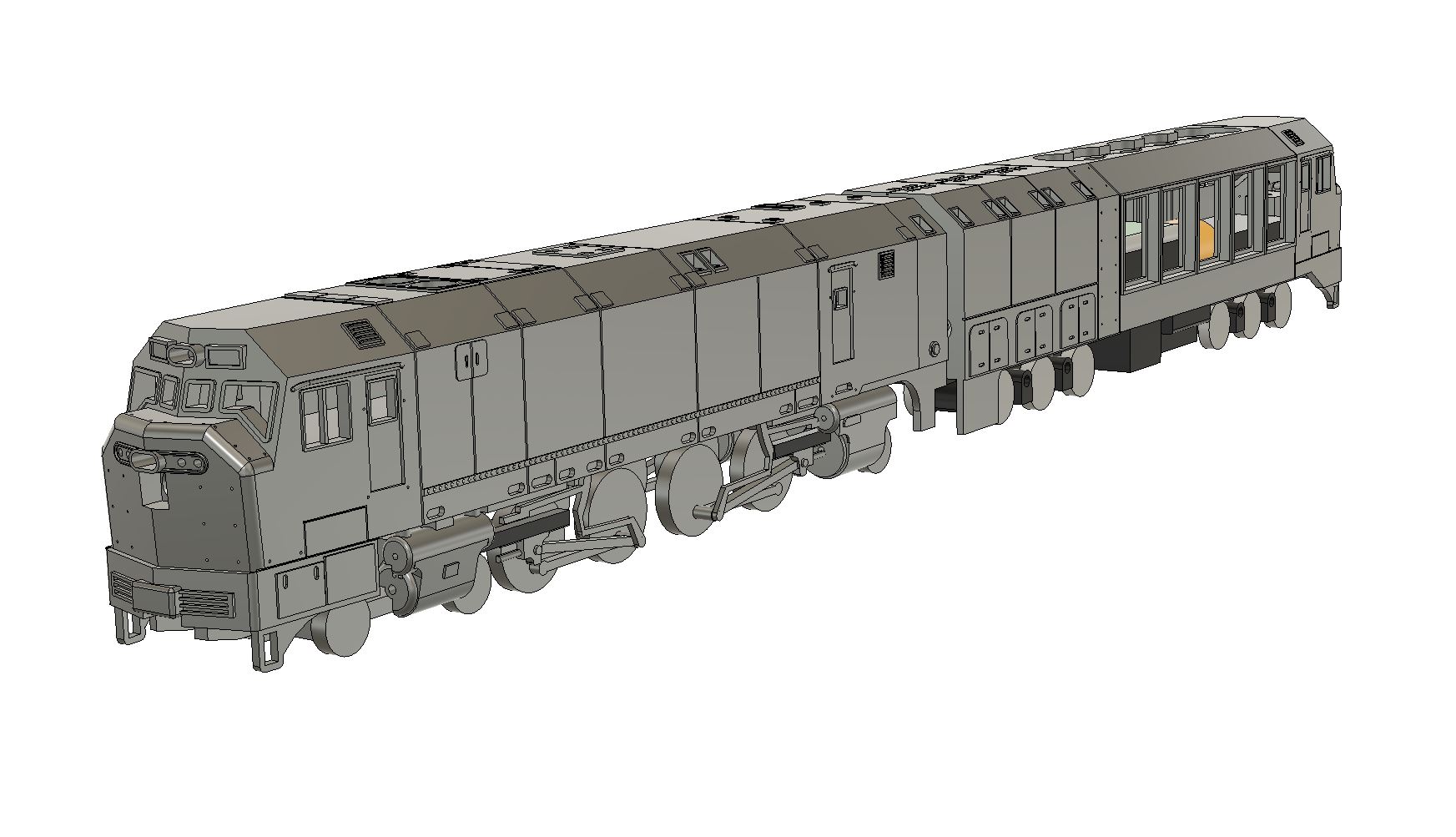
The ACE 3000 was an attempt to create a modern coal-fired steam locomotive in response to the 1970s oil crisis. The history of this proposed locomotive is fascinating, and this TrainWeb page is a great resource if you want to learn about the project.
I took on this project to assess the feasibility of building and selling steam locomotives. Unfortunately, creating the mechanism was time consuming and the finished product was not something that I would take pride in selling. The motor in the locomotive (‘Power Unit’) itself has only enough power to spin the drivers, while the tender (‘Support Unit’) has a heavily weighted Kato RSC2 chassis that does almost all of the pulling. I will certainly design, print, and sell steam locomotive parts, but I don’t think it’s a good idea for me to sell something with a mechanism I’ve butchered.
I was able to replicate the unique driver arrangement by taking two Bachmann 2-6-0 models (GB&W prototype) and placing them back to back after sawing off the rear driver. Both driver sets are geared together with one motor by extending one of the motor shafts and installing a second worm gear. This was a necessity as both driver sets would have been internally coupled on the prototype to ensure that the drivers were always 180 degrees out of phase with each other (note in the CAD rendering the drivers are incorrect).
The bodies were printed in UV photocure resin, and I was pleased with the detail I was able to achieve after tuning the printer. Note the line of rivets running across the Power Unit.
